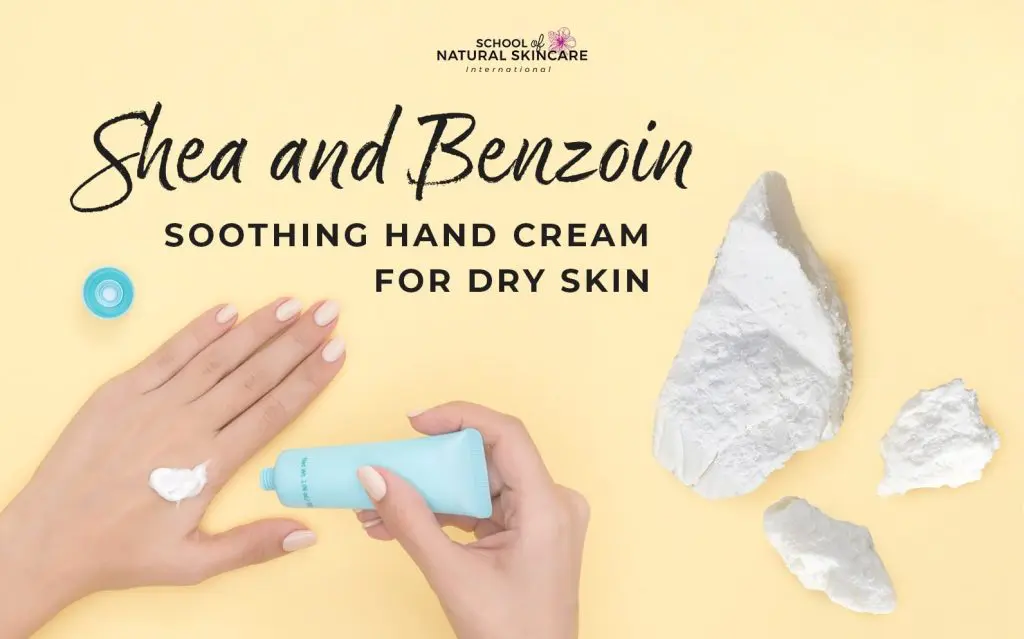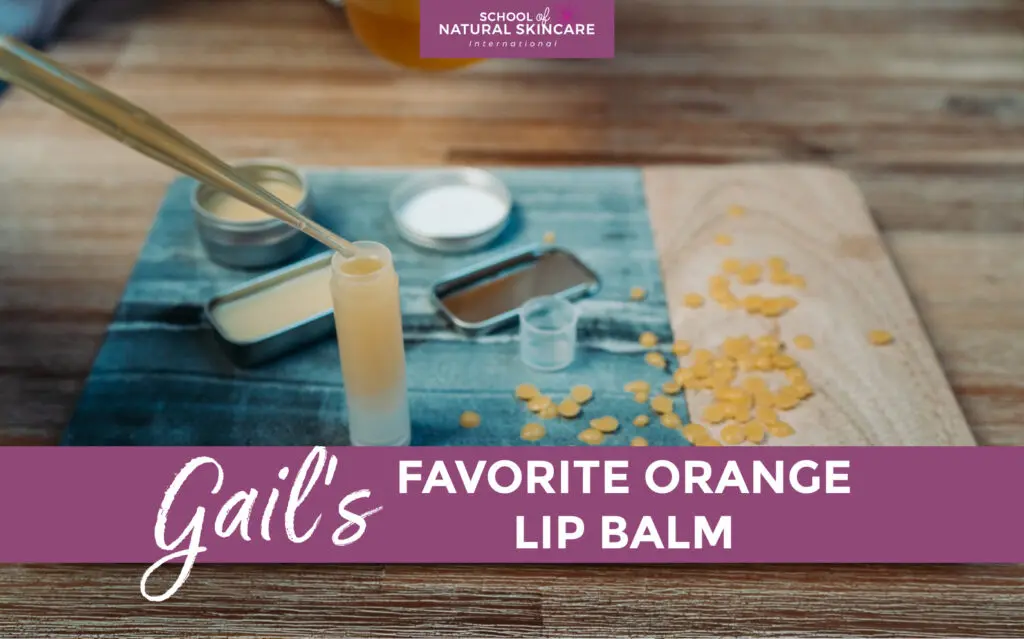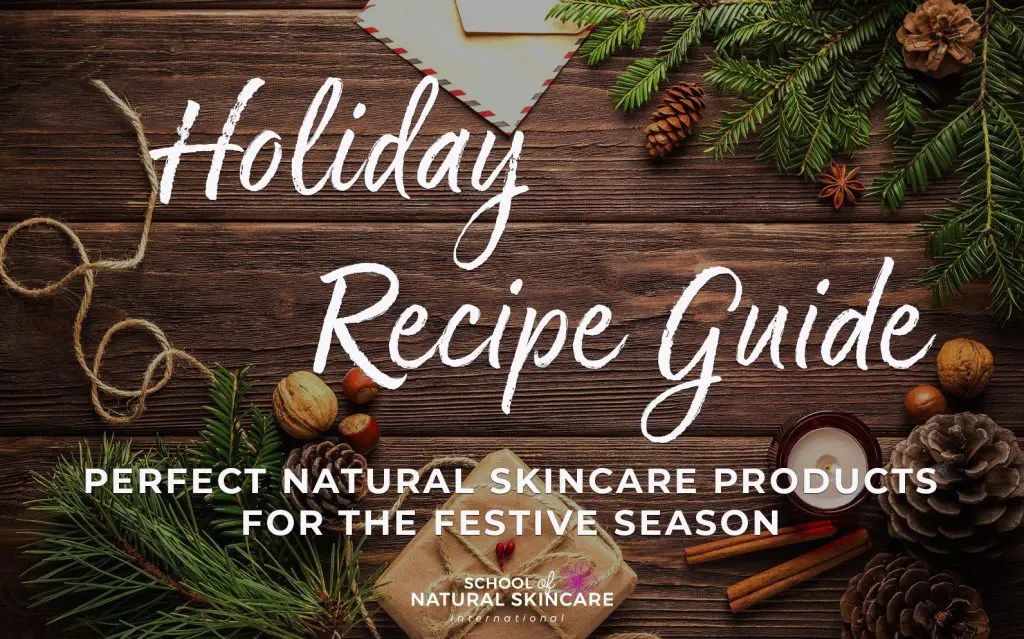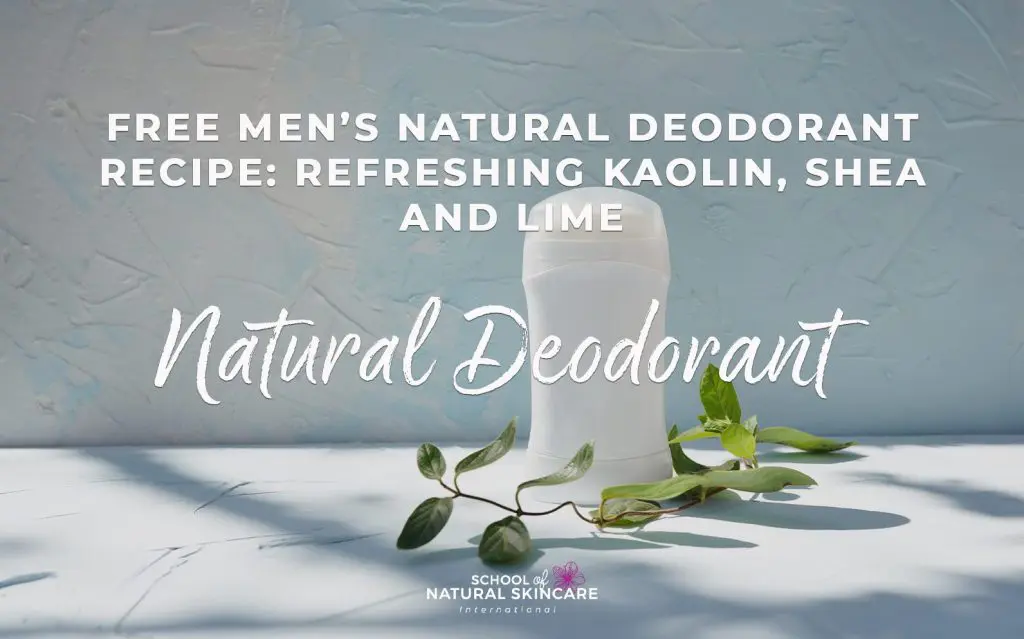The subject of hand care has been a hot topic of late, and due to everyone washing and sanitizing their hands more now we know many people will be experiencing dry skin.
It is really important that you keep up with washing hands and don’t avoid doing so.
What we can do to help is offer you some hand care solutions that will help you to maintain soft, nourished and healthy skin.
We wrote an article all about hand soap that doesn’t dry the skin which you might like to read.
The simple answer is to wash your hands regularly using soap and water and use a cream or lotion to help repair any damage and keep the skin on your hands soft, supple and well-nourished.
Creams and lotions are significantly better than balms and butter, and to find out why, read our article, “Why dry skin needs creams and lotions more than balms and butters: what you need to know to soften and nourish dry skin”.

Hand cream formula
Soothing Hand Lotion
This is our favourite hand lotion and we use it every day throughout the winter.
It’s very nourishing and moisturizing while also being light and quickly absorbed.
We used to spend a fortune on expensive hand creams because hands can get so dry – now we make our own and we love it!
Benzoin is wonderful for chapped, dry skin, lavender is super healing and orange is a natural antiseptic and gentle disinfectant.
Oil phase
5g Xyliance emulsifier (learn more about Xyliance and alternative options here)
7g shea butter
4g sunflower oil
4g avocado oil (we use the green unrefined version in this recipe because we find it much more nourishing for our skin. You could replace this with refined if you wish)
Water phase
75.1g distilled/deionized water
2.5g glycerin
0.3g xanthan gum
Cooling phase
1g preservative (or according to manufacturer’s instructions. Some options are here)
0.1g Vitamin E
0.4g orange essential oil
0.3g benzoin essential oil
0.3g lavender essential oil
To vary the scent you can replace the benzoin with frankincense, cedarwood, or ylang ylang essential oil. You can also substitute the carrier oils for others if you wish.
Method for making creams and lotions
Click the arrows to see step-by-step how to make the cream
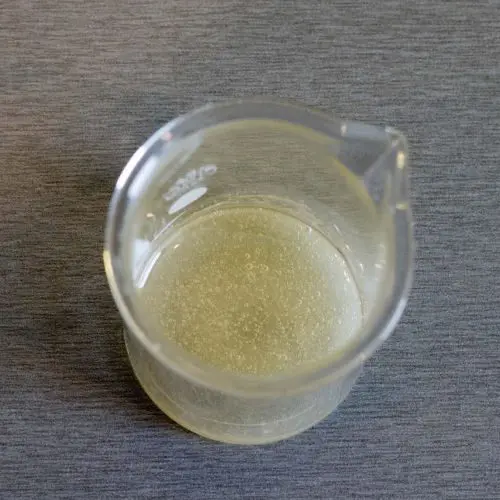
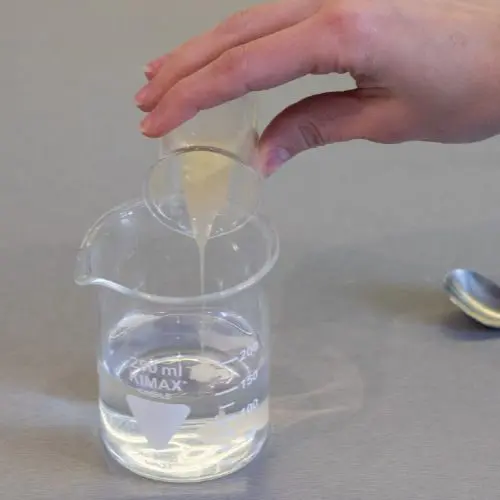
Step 2
Pour the the glycerin and xanthan gum mixture into the water.
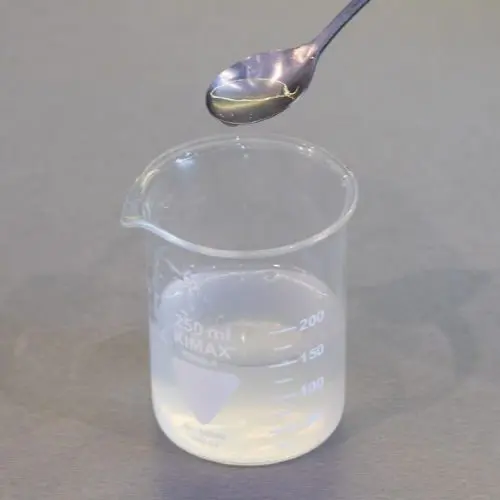
Step 3
Mix thoroughly.
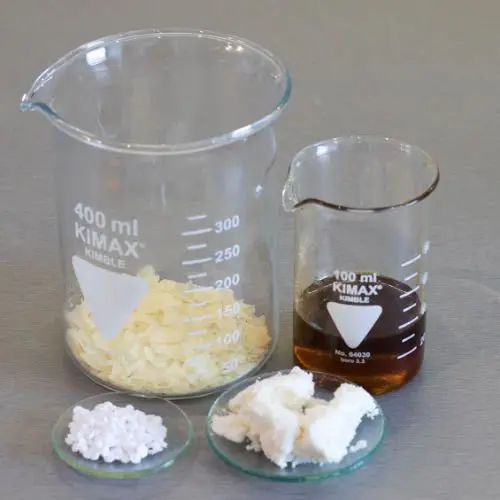
Step 4
Prepare your oil phase by weighing out the oil-phase ingredients.
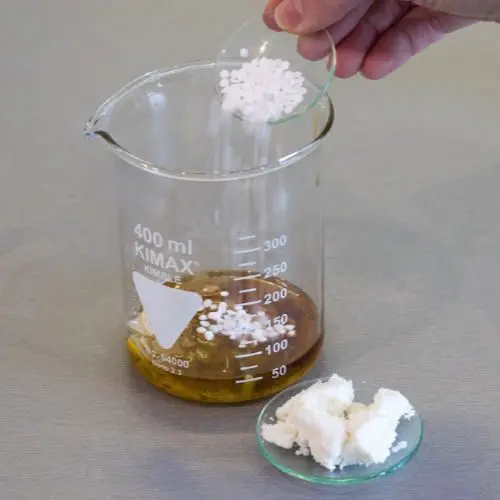
Step 5
Combine the oil phase ingredients in a beaker.
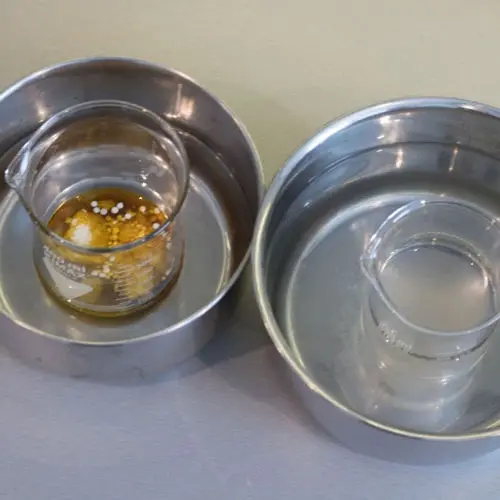
Step 6
Prepare two water baths/bain-maries.
Step 7
Heat both the water phase and oil phase containers in a water bath/bain-marie until both reach the same temperature (70°C or 158°F), measuring the temperature with a thermometer. You can choose to follow the “heat and hold” method if you like.
Step 8
Once both phases have reached the same temperature, carefully remove them from the water bath.
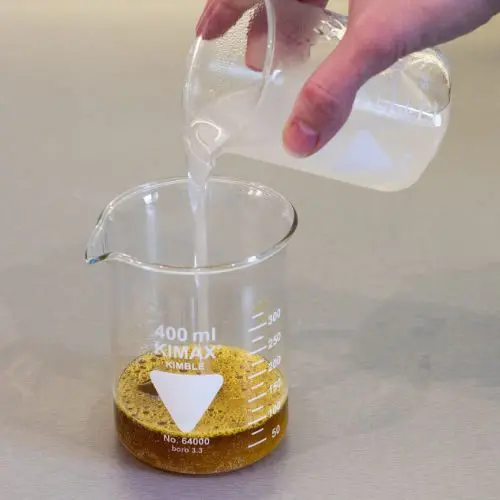
Step 9
Pour the water phase into the oil phase. You can also pour the oil into the water however some oil always gets left behind if you pour it that way around!
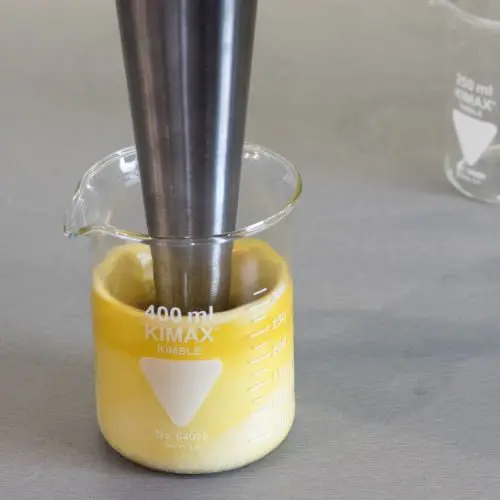
Step 10
Blend with a stick blender with a few minutes to emulsify.
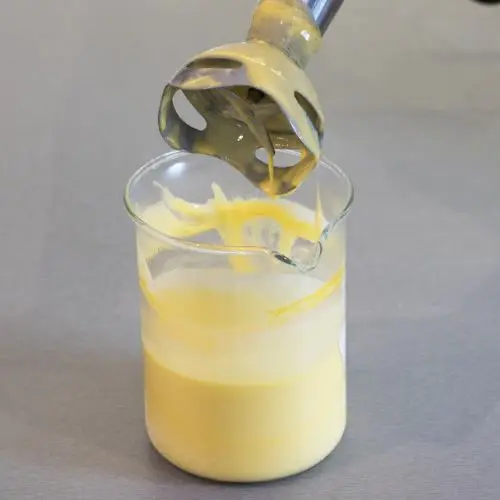
Step 11
The warm emulsion will still be very fluid.
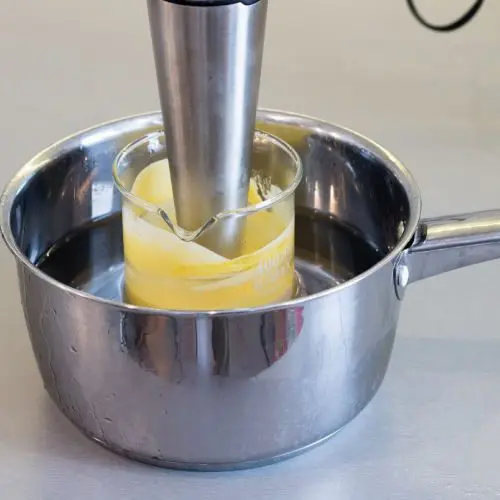
Step 12
Cool the emulsion down by placing the beaker in a cold water bath (sink or saucepan filled with cold water) and mixing until cool.
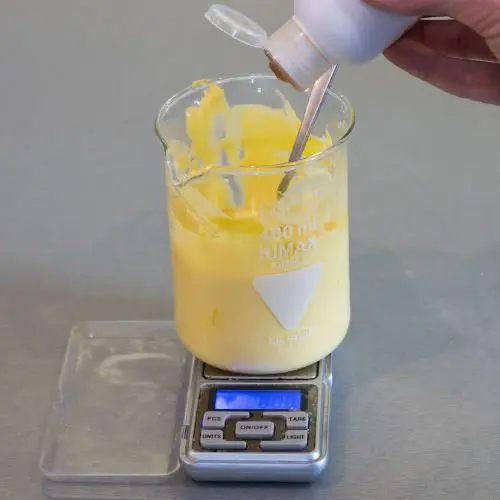
Step 13
Once the temperature has reached 40°C (104°F) add cooling phase and mix until uniform.
Step 14
At this point you can check the pH of your product if you wish. If your preservative isn’t too pH dependant then you can likely skip this step. The easiest way to check the pH as a beginner is to spread a small amount of the emulsion on a pH strip and wait 1-2 minutes for the strip to show the pH. Then you can adjust the pH if needed. We give much more information on how to test and adjust pH in our courses.
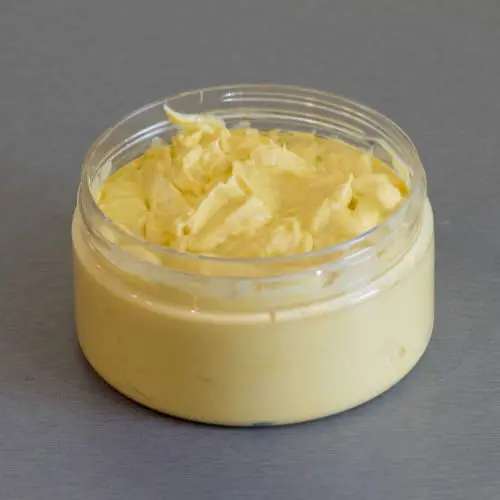
Step 15
Transfer to your packaging of choice and once cooled to room temperature place the lid on.
If you would like to learn how to make your own creams and lotions for a fraction the price of shop-bought brands, then we have a few resources that will help.
Our Certificate in Making Natural Skincare Products has a module dedicated to making your creams and lotions using natural and organic ingredients.
On this course, you’ll learn the key ingredients to include, important steps to forming a successful emulsion and discover a range of natural emulsifiers to use.
We also provide an invaluable troubleshooting guide helping you fix any issues that might arise (such as creams separating) and a guide to adapting cream and lotion recipes, so you can have a go at adapting recipes to suit your preferences.
Includes recipes for:
- Regenerating Ylang Ylang and Frankincense Cream
- Soothing Lavender and Marshmallow Cream
- Eczema Soother
- Regenerating Sweet Dreams Night Cream
- Gentle Cleansing Lotion
- Coconut and Almond Body Lotion
- Rose and Vanilla Body Lotion
- And more!
If you’d prefer to learn how to create your own creams and lotions from scratch, like a professional, rather than following recipes, then you’ll want to join our Diploma in Natural Skincare Formulation.
Here you will learn the theory, practice, art and science of natural skincare in an accredited, multimedia online course!
And when it comes to creams and lotions, we have three modules for you!
A module dedicated to natural preservation; a module all about natural emulsification; and a module that teaches you how to formulate and make a wide range of creams and lotions for the face and body, from lighter body milks and lotions to richer creams and body butters.
And if that might be a step too far right now and you want to explore a little more first, how about our Free Online Training, How to make your own organic lotions and creams?
Free Online Organic Skincare Formulation Course
Fundamentals of Skincare Formulation
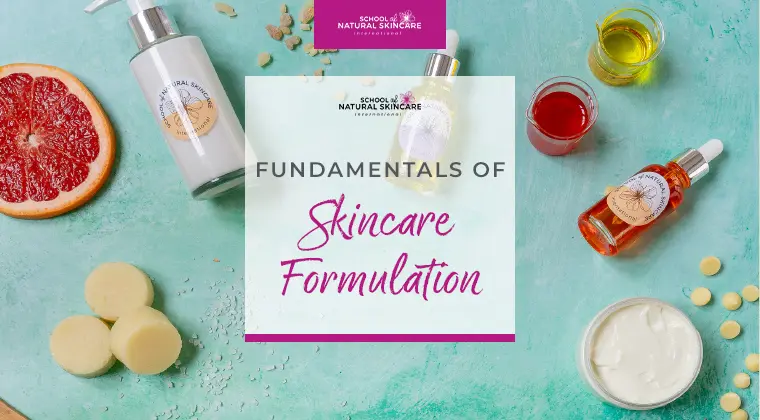
Learn the essentials of skincare formulation with our FREE course!
If you’re confused by all the misleading information out there, we’re here to guide you. Learn how to create natural and organic products confidently, using industry best practices, under the guidance of professional cosmetic scientists.
Exclusive for our newsletter subscribers. Sign up now.
We look after your data in accordance with our privacy policy.
What you’ll learn:
- Formulation Foundations: The basics of cosmetic chemistry and skincare formulation.
- Bodycare: Make a shea-butter-rich body moisturizer with our pro formula.
- Facial Skincare: Rejuvenate your skin with our two facial oil formulas.
- Creams & Lotions: Create shelf-stable moisturizers using our tried-and-tested formula.
- Natural Ingredients: Understand the key natural and organic ingredients used in formulations.
Exclusive for our newsletter subscribers. Sign up now and start formulating your own natural products today!
